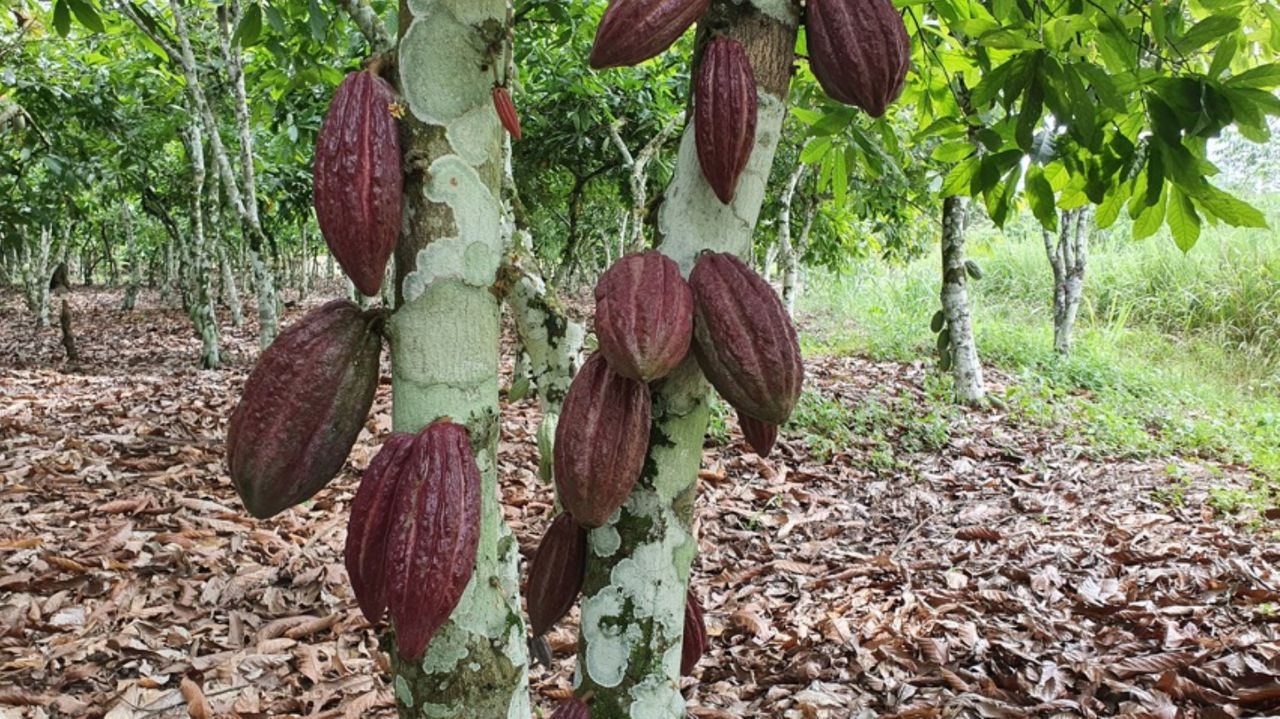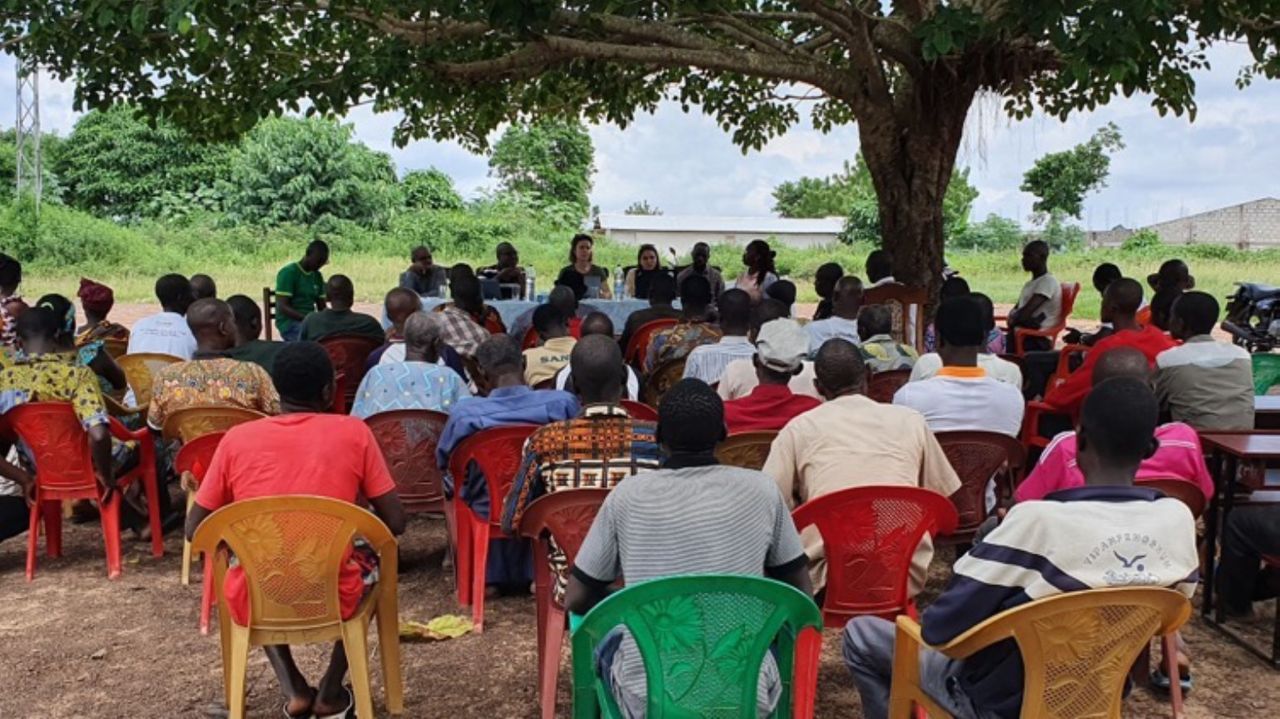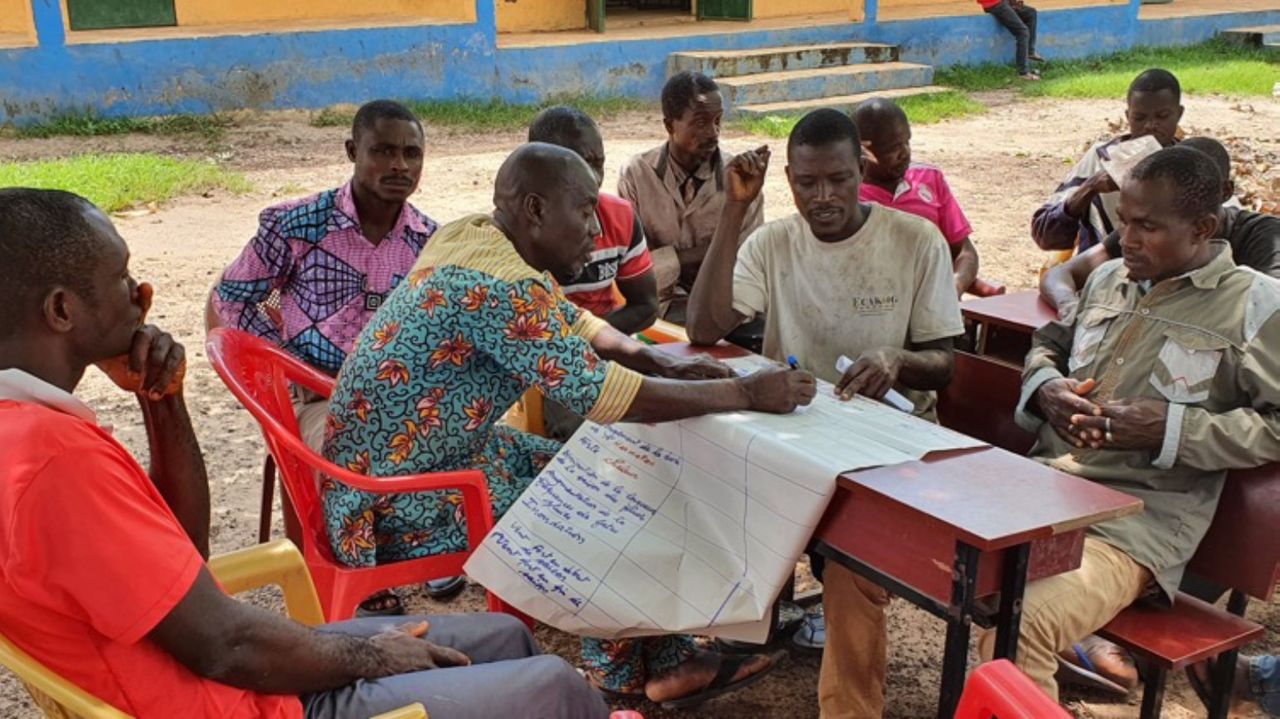
Advans Côte d’Ivoire assesses the impacts of climate change on cocoa farmers
Côte d’Ivoire is vulnerable to climate change, which puts its agricultural systems at greater risk.
Due to the importance of climatic conditions (rainfall, temperature, duration of droughts) on cocoa growing, cocoa farmers are particularly vulnerable to the impacts of climate change. Many reflections are currently underway on the sustainability of a sector that represents 15% of the Ivorian GDP, and the protection of cocoa farmers. Advans Côte d’Ivoire, a pioneer in agricultural financial inclusion in Côte d’Ivoire, wished to conduct a study to evaluate the impact of climate risks on cocoa production. The study aimed to confirm the immediate and future impacts of climate change, to identify possible mitigation strategies and adaptation measures for clients. This study, supported by the European Investment Bank, is part of the Advans Group’s Climate strategy and was conducted by RISOME and JMK Consulting..

To grow sustainably, cocoa trees need specific climatic conditions.
The cocoa tree grows in forest areas with a hot and humid climate and needs certain conditions to develop. To grow properly the trees need a good water supply (rainfall), a dry season not exceeding 3 months, an average temperature between 24°C and 28°C and at least 4 hours per day of direct sunlight during the flowering period (from April to July).
However, the analysis of climate change over the 1960-2020 period shows a deterioration of these conditions, especially in certain areas. A decrease in annual rainfall, an increase in average temperatures, a shortening of the rainy season and a lengthening of the harmattan[1] period were observed. The trends are more or less pronounced depending on the four agro-climatic zones evaluated, but overall they impact the growth of the cocoa tree and its productive capacity. This leads to a decrease in yields and a deterioration in the quality of the beans.
By 2050[2], these climatic conditions are expected to worsen, with a "rise in temperature" (up to + 2°C), an "increase in the number of hot days"[3] in addition to an already insufficient precipitation level in some areas. The deterioration of climatic conditions between now and 2050 will not be without impact on cocoa farming in Côte d'Ivoire: the regions that are the most affected will gradually have to adapt and transform their agricultural practices by favoring diversification, for example.

The field survey conducted with producers, cooperatives and professionals in the cocoa value chain allowed us to compare the weather data with their perception of the impacts of climate change.
Overall, the producers' testimonies confirm the climatic data collected regarding the lack of rainfall and the increase in temperature and underline their impacts on cocoa production. 57% of them cited climate change as one of the difficulties they encounter in cocoa farming.
Cocoa farmers generally feel powerless in the face of climate change, but still mention solutions for adaptation. Adaptation solutions already in place include "additional phytosanitary products or organic inputs", agroforestry and practices to limit the spread of diseases. Producers also asked for "access to weather information" and "input credit”.
For each climate risk, Advans Côte d'Ivoire has identified possible actions to continue to support cocoa producers in a sustainable manner to cope with climate change and adapt to its impacts. The institution is already starting to raise awareness among its employees (the Climate Fresk will be deployed for all employees in 2023), setting up an index-based agricultural insurance and developing an agroforestry loan (in partnership with AVSF and CEF as part of the Equité 2 program). Advans Côte d'Ivoire is also exploring other possibilities to improve its product offering in line with the findings of the study and looking to obtain support from partners for the development of training or the provision of tools.
Advans Côte d'Ivoire is committed to continue to support cocoa producers, an essential element in the country's economic and social development, to enable them to face the various challenges of climate change. We want to work collectively with other committed actors in the cocoa sector to ensure a decent and sustainable income for our producers in the long term.
Watch this space! We will continue to share information on the evolution of our climate strategy in the months to come.
